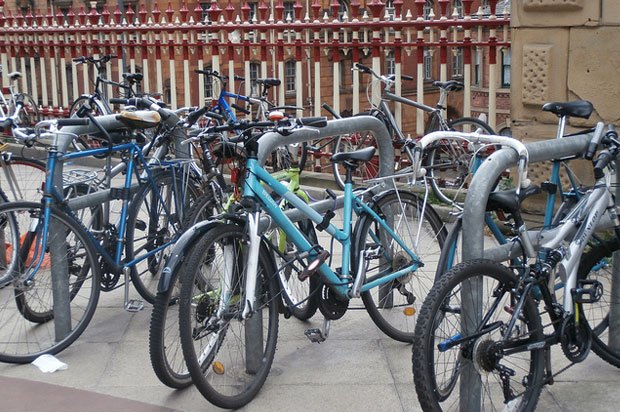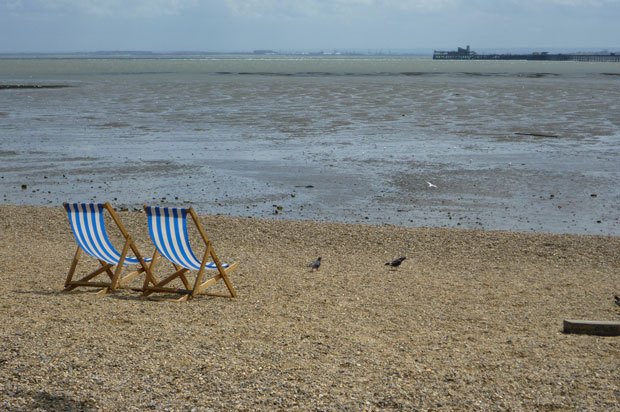Travelling by bike
Cheap, reliable, green and keeps you fit. Is there any reason why you shouldn't be getting on your bike? Here's what you need to know before you hit the road.

Two wheels are better than four in a traffic jam
Buying a bike
Need a bike? You can often pick up a decent second-hand bike through ads in the local paper or post office window. If you want a sparkly new one it’s worth asking if your employer is part of the Bike2Work scheme, which lets you buy a new bike tax free and spread the payments over several months.
If you don’t want to commit to buying a bike you could always hire one. There are now bike share-schemes running in several cities across the UK.
Wearing a helmet
It may not be a legal requirement (yet), but wearing a helmet offers vital protection for your precious head. It’s essential you try it on before you buy because helmets that don’t fit snugly around your head will offer little or no protection, and you’ll be put off wearing one that’s uncomfortable.
It’s also a good idea to wear light clothing or, ideally, high-visibility gear like a reflective vest to make sure other road users can see you.
Riding a bike
We know you can ride a bike, but if you need a confidence booster before you tackle that busy roundabout or box junction it’s a good idea to get a refresher course. There are a number of organisations around the country that offer (sometimes free) cycling proficiency courses, as well as mountain bike skills training to help you make the most of your bike off-road.
The Highway Code
As well as staying safe yourself it’s important to ride in a way that’s safe for others.
If you cycle on the roads the Highway Code applies as much to you as other drivers, so it’s worth being aware of what rules apply to cyclists.
If you’re cycling on the roads at night or in poor visibility it’s a legal requirement for your bike to have:
- A white front light
- A red rear light
- A red rear reflector
- Amber pedal reflectors on the front and rear of each pedal
You’re allowed to use either steady or flashing lights, provided they’re bright enough.
Planning your route
Cycling on busy roads can be risky, so if you can check out routes that aren’t so busy. Several local councils have produced their own cycling and walking maps showing recommended routes. Check with your local council to find out if there’s one for your area.
The National Cycle Network, coordinated by the sustainable transport charity Sustrans, also covers over 12,000 miles of traffic-free paths, quiet lanes and traffic-calmed roads. A map of the whole network can be downloaded from the website and the site also has an interactive mapping facility that lets you find dedicated cycle routes near where you live.
Lock up your bike
It’s important to lock your bike to something solid and immovable (ideally a proper cycle parking stand), in a well-lit area, using a strong lock. It’s worth putting a lock around the wheels as well as the frame, especially if they’re quick-release.
It’s a good idea to take a photograph of your bike and make a note of the frame number and any other distinguishing features. This information should help the police identify it if it ever gets stolen. It’s also worth registering your bike for free with Immobilise and getting it property-marked or tagged.
You might also want to consider insuring your bike.
Taking your bike on public transport
Most train companies allow bikes but you often have to book in advance, so check with the individual company before you travel. Local bus services don’t usually allow bikes, but long-distance bus and coach services will often let you put a bike in the luggage hold if there’s room. Again, check with the individual company.
Folding bikes are much easier to carry on all forms of public transport and are usually treated as an ordinary piece of luggage.
Looking after your bike
You don’t have to spend your weekends obsessively scrubbing off every speck of dirt, but it’s important to clean your bike regularly, as well as oil the chain and gears to keep it in good working order. It’s also a good idea to get it serviced at least twice a year. Your local bike shop will probably be set up to do this.
Photo of bikes by Flickr
Next Steps
- Chat about this subject on our Discussion Boards.
By Amy Turner
Updated on 29-Sep-2015
No featured article














